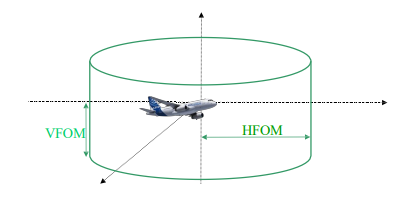After digging up and reading through many documents, I have a rough picture of the evolution of DO-260 versions, particularly for its ADS-B Quality Indicators. For instance, in DO-260 (Version 0) integrity & accuracy were expressed in a single parameter called Navigation Uncertainty Category (NUC). In DO-260A (Version 1), more quality indicators were added such as Navigation Integrity Category (NIC), Surveillance Integrity Level (SIL), Navigation Accuracy Category for Velocity and Position (NACv & NACp), and many more. In fact, there were a lot of new things introduced in this version. In DO-260B (Version 2), more were added such as SIL supplements, System Design Assurance (SDA), Geometric Design Assurance (GVA), and many more.
It is important to note that the majority of the quality indicators in DO-260A were reliant on vertical components. For example, NACp is derived from Horizontal Figure of Merit AND Vertical Figure of Merit, NIC and its Vertical Protection Level, NACv and its VFOM, etc. However, in DO-260B, the vertical components from the quality indicators were removed and a new parameter called GVA was added.
I found too little info on GVA. What I know is that GVA shall be set by using the Vertical Figure of Merit (VFOM) 95% from the GNSS position source used to encode the geometric altitude field in the ADS-B message. Thus, each number on Figure 1 has a meaning. I searched about VFOM and found a schematic of it (Figure 2). Would this be a valid representation of GVA?
Sources:
Figure 1 : RTCA DO-260B DRAFT Version 4.2
Figure 2 : GNSS Height on Airbus A/C, Slide 5
1. Analysis of Quality Indicators in ADS-B Messages by Simon Tesi & Stainslav Pleninger
2. Study on Airworthiness Requirement for the Position QUality of ADS-B System by YAN Fang


